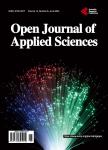Interventional Radiology in Côte d’Ivoire: Analysis and Assessment of the Radiological Risk of the Surgical Team
Interventional Radiology in Côte d’Ivoire: Analysis and Assessment of the Radiological Risk of the Surgical Team作者机构:Laboratoire de physique nucléaire et radioprotection Unité de Formation et Recherche Sciences des Structures de la Matière et Technologie université Félix Houphouë t Boigny 22 BP 582 Abidjan Cô te d’Ivoire Higher Normal School Abidjan Cô te d’Ivoire Autorité de régulation de sureté et de sécurité nucléaires 08 BP 4028 Abidjan 08 Abidjan Cocody—Riviera Bonoumin Rond-Point Alassane Ouattara Abidjan Cô te d’Ivoire
出 版 物:《Open Journal of Applied Sciences》 (应用科学(英文))
年 卷 期:2021年第11卷第2期
页 面:216-229页
学科分类:1004[医学-公共卫生与预防医学(可授医学、理学学位)] 100402[医学-劳动卫生与环境卫生学] 10[医学]
主 题:Interventional Radiology Embolization of Uterine Fibromyomas Radiological Risk Radiation Protection
摘 要:Ionizing radiation is widely used in medical practice for both diagnostic and therapeutic purposes. However, they are not devoid of adverse health effects on exposed operators. Therefore, we propose to assess the radiological risk of the interventional radiology team of the International Polyclinic of Indénié of Abidjan during the procedures of Embolization of uterine fibromyomas. The effective and equivalent doses to the extremities and crystals were estimated by TLD dosimeters positioned at different body areas selected on the basis of a radiological analysis of the exposure of personnel during five procedures. The analysis of fluoroscopic and record times showed variability in or an average fluoroscopy time of 32.37 min with extremes of 25.14 to 56.32 min;average record time of 0.52 min with extremes of 0.12 min to 1 min. The annual effective doses were respectively, 4.04 mSv, 3.42 mSv, 2.84 mSv;2.28 mSv, in the Radiologist (R), Operator Assistant (O2);Anesthesiologist (A2), Manipulator (M2). The annual equivalent doses to the radiologist’s predominant extremities and lenses were left index and left lens with values of 37.07 mSv and 9.46 mSv. The estimated doses in our study are reassuring from a regulatory point of view of dose limits. The results of our work have shown no significant short-term danger to the health of personnel.



